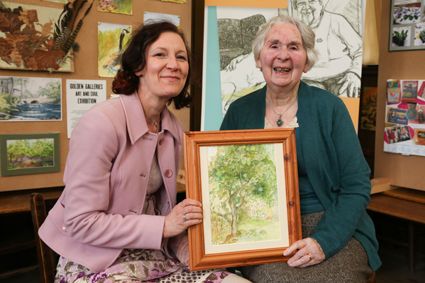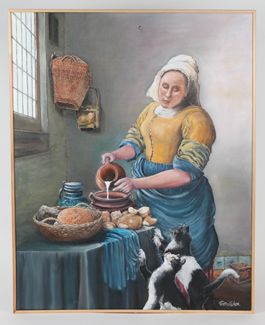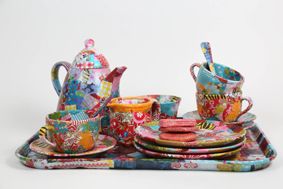Art therapy refers to the use of artistic media as a therapeutic technique. it is not delivered in the form of a lesson; instead, it is used as a method of self-expression and communication, and participants do not need to have any prior experience or skill level. Art therapy has long been used as a healing practice for those with a variety of physical, mental and emotional disorders, and it is now recognised as a powerful tool when working with people with memory loss and dementia, and those living within care homes, helping to enrich their lives and engage them with wider society.
‘The use of art therapy within our homes is important, because it’s incredibly stimulating,’ says April Dobson, head of dementia innovation at Abbeyfield ‘For some people living with dementia, it’s a chance to create by themselves, and you can see how absorbed they are in their creativity, and how settled and comfortable they feel. For others, it’s about enjoying the company and interaction as well as the creativity, with people working together to create collaborative pieces and discussing what they are going to produce, which is lovely.’
Indeed, art therapy is proven to be both soothing and empowering for those with dementia: it is a chance for them to feel fully immersed in the present moment, with no need for anxiety about the past or future, and their creativity can help to strengthen their sense of self-worth.
While these mental benefits are paramount, art therapy can see physical improvements, too.
‘The manual dexterity gained from creating works of art is incredibly important,’ explains April. ‘People holding pencils, paintbrushes and simply moving around requires a certain amount of spatial awareness and dexterity.’
Artistic strategy
Artistic pursuits are actively encouraged at Abbeyfield, where this form of therapy has become part of the fabric of its dementia strategy, as it moves towards helping people through psychosocial internventions.
For our ‘Golden Galleries’ programme we asked our residents to create their own works of art ,’ states April, who explains that, while broad themes were set, the interpretation of these themes – and the medium used to create – was left entirely up to the residents themselves.
‘In terms of materials, anything goes,’ reveals April. ‘We’ve had some carved items; some knitted. We had a whole scene knitted for our “seaside” theme, which included a mermaid and a lifeboat. We’ve had sculpture – one lady made large seashells based on real-life shells, which were fired by a family member. She them painted them and the family member had them glazed. Then there was a lovely story of a gentleman whose late wife had started a tapestry, but she had only managed to complete one corner before she passed away. Through our art innovation, he decided he would learn how to do it and he finished the tapestry.’
Abbeyfield also offers opportunities for those with late-stage dementia to benefit from its programme of arts.
‘Art is not limited to painting or drawing,’ says April. ‘It can also be poetry recitals and music. We’re doing a project with Playlist for Life www.playlistforlife.org.uk, which helps to connect music, people and memories. This type of interactive art can also be about the vibration of a particular instrument and how that resonates with someone, so we’re starting to look at this to see how we can develop this take on music to engage with people in the later stages of dementia.’
Abbeyfield has worked to bring its residents’ artwork to a wider audience, so the residents can feel a greater pride in their work, as well as engaging those with dementia with the wider community, to help others see past the condition to the individual behind it. In a pioneering move, the artwork has been displayed in various exhibitions, including the Birmingham Museum & Art Gallery www.birminghammuseums.org.uk, as a way of challenging the public’s beliefs about old age and dementia.
‘Our residents were able to visit the galleries, to see their artwork hanging on the walls,’ says April. ‘It was wonderful for them to see what they’d created being exhibited in such brilliant spaces, and to feel valued bXoth by us as an organisation and also as people who have a real passion for art. That’s really what it is all about.’




)
)
)
)
)
)
)
)